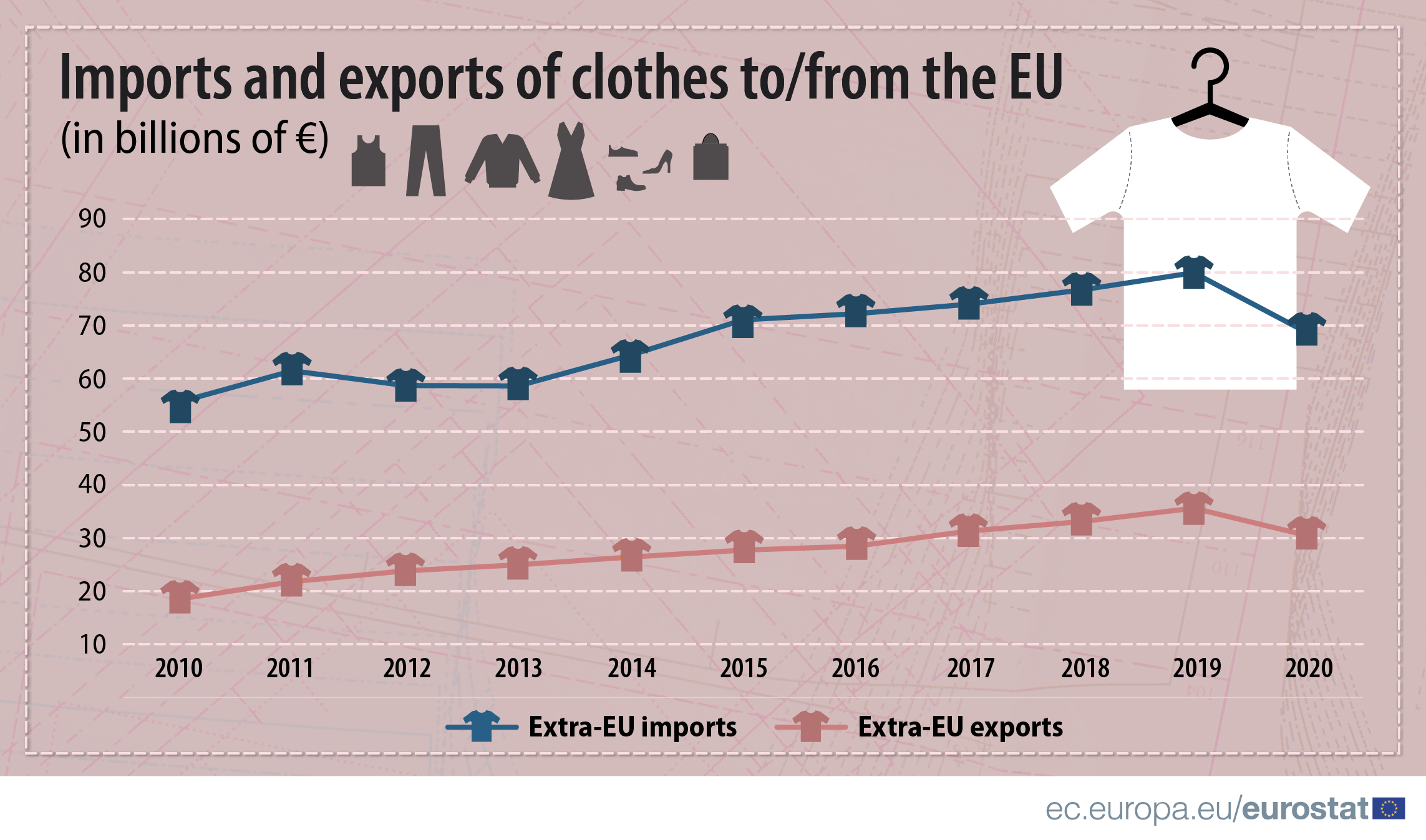To prevent the spread of the COVID-19 pandemic in 2020, countries around the world took a variety of restrictive measures, which negatively affected international trade in goods – trade in clothes not being an exception.
As a result, imports of clothing to the EU Member States decreased by 14% in value in 2020 compared with 2019, despite the increasing trend over the last decade (up by 24% since 2010).
While the EU thus imported clothes worth €69 billion in 2020 from non-EU Member States, EU exports of clothes to countries outside the EU were worth €30 billion in 2020. Compared with 2019, exports recorded a 14% drop in value, following a steady increase over the last decade (up by 64% increase compared with 2010).
Source dataset: DS-645593
China, the main origin of imported clothes
Imports of clothes from non-EU countries came mainly from China (€21 billion, or 30% of total extra-EU clothes), Bangladesh (€12 billion, 18%) and Türkiye (€8 billion, 12%), followed by the United Kingdom (€4 billion, 6%), India and Vietnam (each €3 billion, 4%) and Cambodia (€2 billion, 4%).
Source dataset: DS-645593
Germany, the largest importer of clothes
In 2020, almost €17 billion-worth of clothes were imported by Germany from non-EU Member States (25% of total extra-EU imports of clothes imports by value). This makes Germany the largest EU importer of clothing from non-EU countries, ahead of Spain (€10 billion, 15%) and France (almost €10 billion, 14%).
Italy, the largest clothing exporter
Among EU Member States, Italy exported clothes worth €10 billion to non-EU Member States in 2020 (33% of total extra-EU exports of clothes by value). This makes Italy the largest extra-EU exporter of clothes, ahead of Germany (€5 billion, 17%), Spain (€4 billion, 14%) and France (almost €4 billion, 13%).
This news is published on the occasion of the Fashion Revolution Day (24 April).
For more information:
- The EU data reflect the political change in the EU composition so the UK is considered as an extra-EU partner country for the EU. However, the UK was still part of the internal market for the period covered, meaning that data on trade with the UK were still based on statistical concepts applicable to trade between the EU Member States. As a consequence, while imports from any other extra-EU trade partner are grouped by country of origin, the UK data reflect country of consignment. In practice this means that the clothes imported by the EU from the UK were physically transported from the UK but part of these clothes could have been of other origin than the UK. For this reason data on trade with the UK are not fully comparable with data on trade with other extra-EU trade partners like China.
To contact us, please visit our User Support page.
For press queries, please contact our Media Support.



